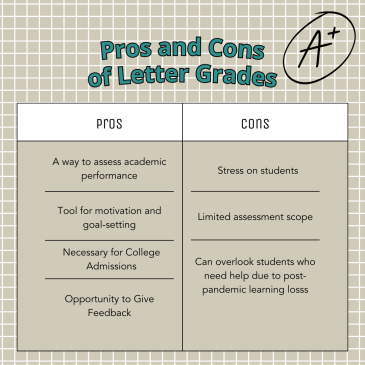
When you think of the American grading system, you might picture a student's satisfaction of seeing a big red “A” scribbled at the top of an assignment, or the disappointment if they've fallen short of the grade they were hoping for. But it’s not as simple as a letter grade on a report card. It’s a complex, traditional grading system that has doubts alongside its supporters. But times are always changing—should teachers giving letter grades change with it?
Essential Features of the U.S. Grading System
The U.S. grading system emerged at a time when classroom sizes began to expand and teachers needed a way to properly evaluate their students. Along with the creation of the modern College Board, institutions needed a way to evaluate the new generation of learners while encouraging learning growth for students. Universal scoring and letter grades entered the class, making way for the traditional grading that we still use today.
Despite traditional grading being ingrained within our school systems for such a long period, critics have been questioning the use of letter grades since the early 1900s, claiming that the current system of academic grading “sterilizes all personal initiative and ambition” for students. Here are a few of the commonly held benefits of the traditional grading system, in addition to some of its greatest criticisms.
Pros
1. A way to assess academic performance
Letter grades can act as a progress check so everyone can easily track their education journey. A high letter score can determine if a student is not only comprehending the information but also applying it to their studies. It also makes assessing academic performances more universal because everyone has the ability to understand education standing based on a letter format.
2. Tool for motivation and goal-setting
When educators assign grades, students are held accountable for their academic performance. It can also allow students the opportunity for self-discovery by identifying their strong suits. The traditional grading scale can inform them of what they’re succeeding at and what they can improve on in the future.
3. Necessary for College Admissions
Letter grades act as a practical way of communication between colleges. College admission committees are able to recognize student understanding based on the grade point average (GPA) system, giving them the opportunity to look over thousands of applicants in a fraction of the time.
4. Opportunity for Educators to Give Feedback
For educators, school letter grades may clearly measure their student's progress. One teacher favors the traditional grading system because it gives their students a chance to measure their progress and in turn, set personal goals for themselves to continue their academic success. When results are easy to calculate, educators are then able to decipher where a problem may be for a student. As a result, they are then able to offer feedback based on knowing exactly where things have gone fuzzy.
______
Who are you called to be?
Pursue your purpose at PLNU.
______
Cons
1. Stress on Students
On the other hand, it’s also believed that poor letter grades can lead students to feel unmotivated, or even to abandon their education journey altogether if they consistently struggle to succeed by the scale’s standard. Alternatively, a student who typically does well with the grading scale may not do well on one assignment, leading to panic and self-doubt in their future education endeavors. Letter grades can also create unhealthy competition within the classroom, leading to not only stress but also an unhealthy community between students and teachers.
2. Limited Assessment Scope
The National Education Association reported that high test scores do not automatically equal understanding of the material. While a student may excel on a test, it doesn’t mean they would automatically do well on a written report, and vice versa. Even if a student is less skilled at writing or test-taking, it doesn’t mean they aren’t advancing their learning. Alternative modes of assessment can lead to better results for students demonstrating they know the material they’re being taught. Examples of this could be offering students the option to record and present a video instead of a live presentation, or to have hands-on projects to demonstrate they’ve learned the information and can respond to it creatively.
3. The impact of post-pandemic learning loss
Since the pandemic, there have been reports that students in need of attention and support are not as inclined to receive it from academic professionals because, despite their decline in understanding, they’re still earning good scores. Satisfactory letter grades may signal to educators or families that their students are succeeding rather than falling behind, even if some students aren’t fully comprehending the material. It’s important to remember that a rigid grading system is no substitute for individualized learning.
Are letter grades still applicable to today’s classroom?
Around the country, many aspects of school are changing. Post-pandemic learning loss remains prevalent across the country, with test scores taking a significant decrease and the average student falling behind in a wide variety of subjects. Additionally, many teachers are choosing not to give their homework, finding positive results from forgoing the extra hours spent outside of the classroom. But where do letter grades lay in this conversation?

For now, letter grades continue to be the standard in our education system. One study found that at least 68% of American high schools use the traditional grading system with only 4% using an alternative mode of education evaluation. A majority of educators and educational organizations still believe there is more merit than detriment to the grading system, although how the system will evolve remains to be seen. The primary concern within the U.S. grading system should always have the pursuit of knowledge and learning as their highest priority. While the traditional grading system may not always keep student understanding first in line, it’s undeniable that letter grades persist as the standard of measurement and it would be hard to separate the intricately-tied bond of education from it.
The Impact of Educators
No matter what systems schools use to track students’ progress in learning, the real importance lies with the quality of educators. While grades act as a measuring tool for understanding material, educators are the ones leading students on the journey of education through guidance, feedback, and support. Students will likely not remember their feelings about a school’s grading system as much as how impactful a teacher was on their lives. If you feel called to lead the next generation, visit our guide on how to start the process of becoming a teacher. Or check out PLNU’s School of Education program—which offers bachelor's and master's degrees to help support you wherever you are in your career in education.
